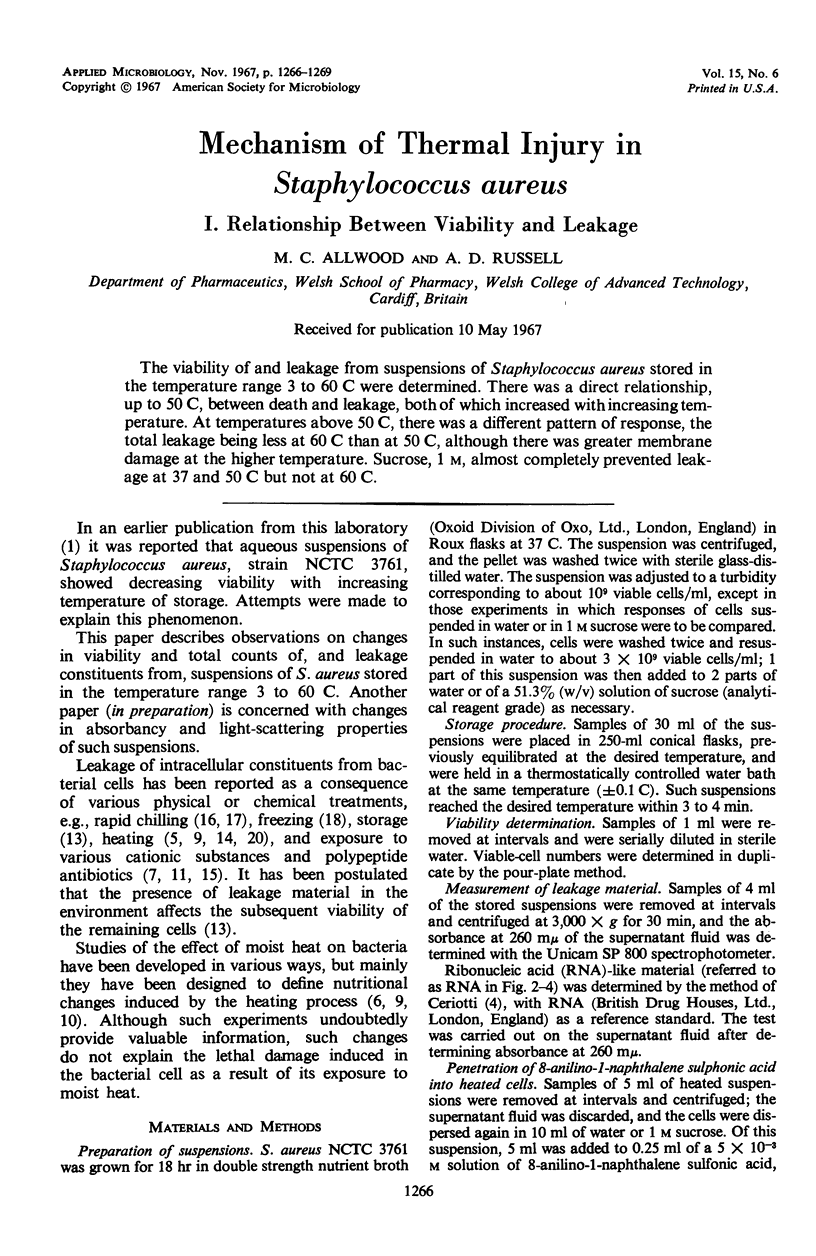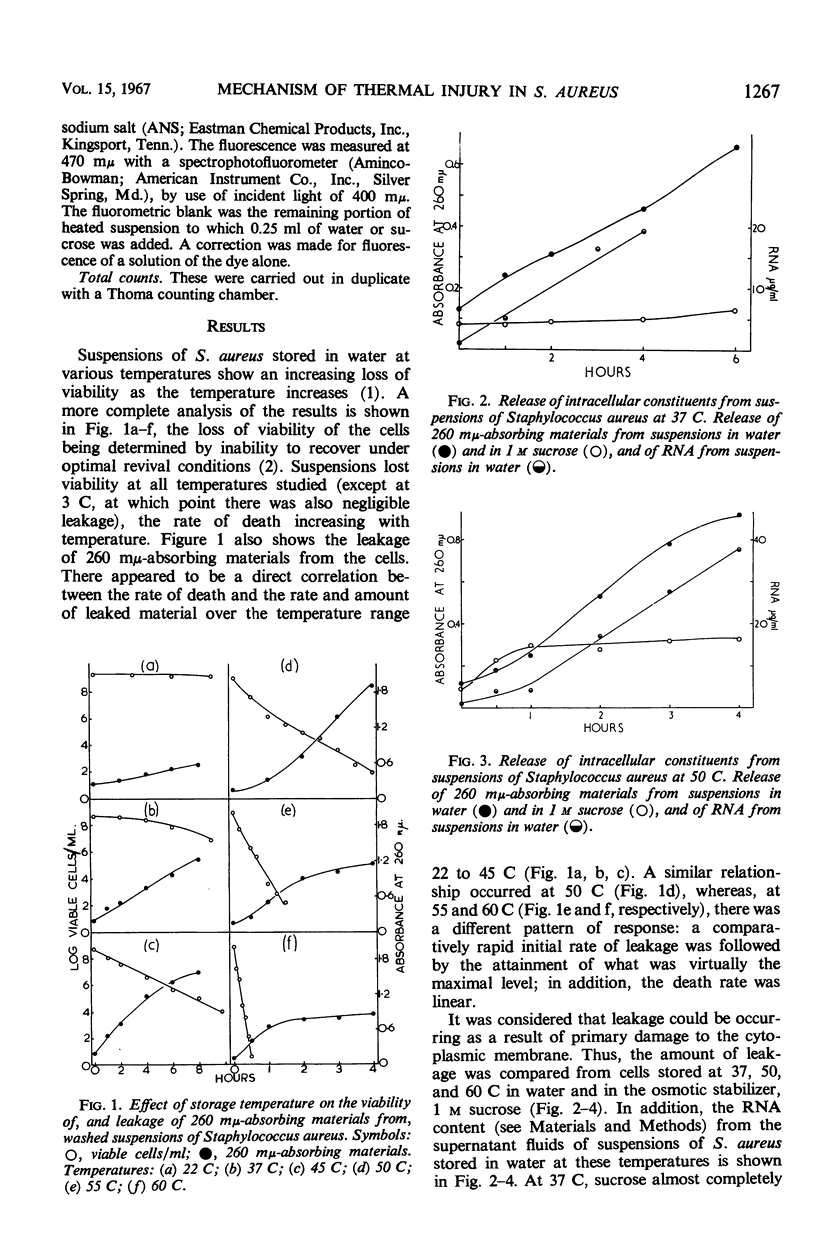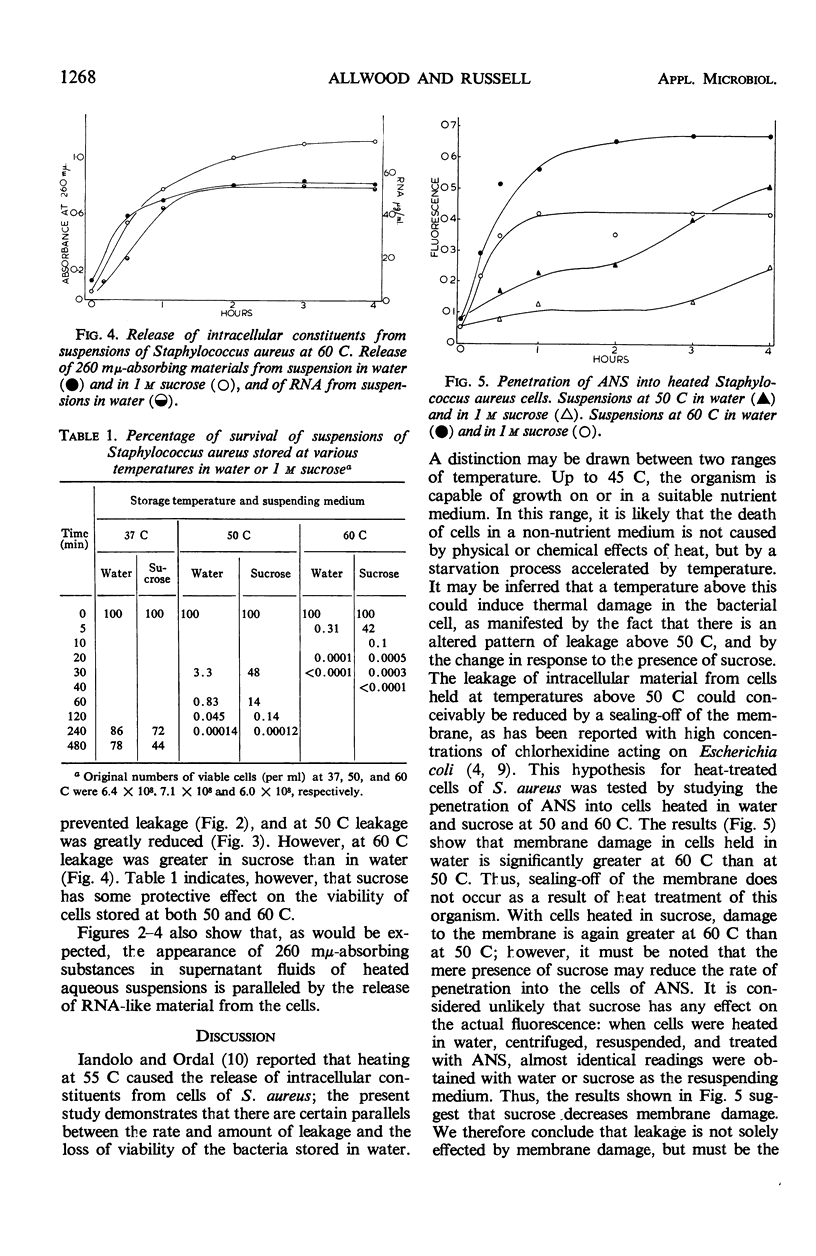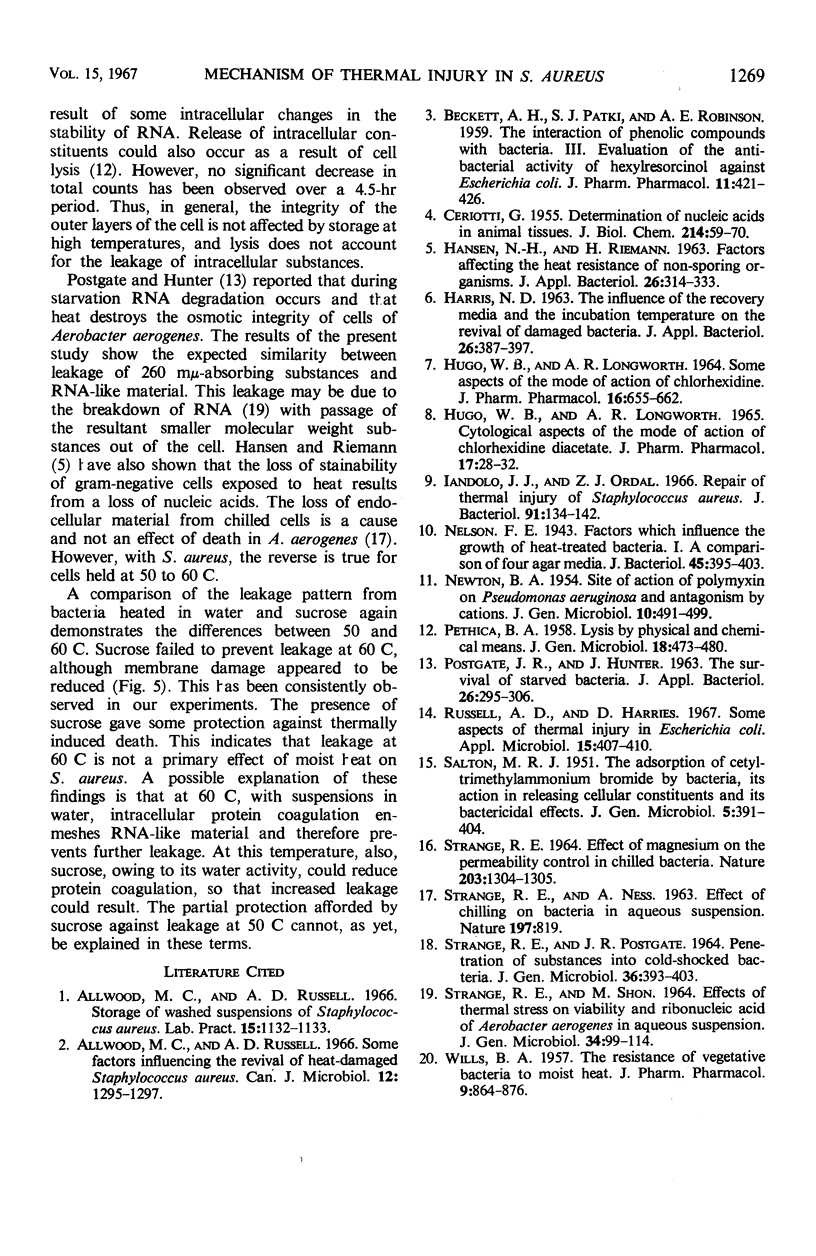Abstract
The viability of and leakage from suspensions of Staphylococcus aureus stored in the temperature range 3 to 60 C were determined. There was a direct relationship, up to 50 C, between death and leakage, both of which increased with increasing temperature. At temperatures above 50 C, there was a different pattern of response, the total leakage being less at 60 C than at 50 C, although there was greater membrane damage at the higher temperature. Sucrose, 1 m, almost completely prevented leakage at 37 and 50 C but not at 60 C.
Full text
PDF



Selected References
These references are in PubMed. This may not be the complete list of references from this article.
- Allwood M. C., Russell A. D. Some factors influencing the revival of heat-damaged Staphylococcus aureus. Can J Microbiol. 1966 Dec;12(6):1295–1297. doi: 10.1139/m66-176. [DOI] [PubMed] [Google Scholar]
- Allwood M. C., Russell A. D. The storage of washed suspensions of Staphylococcus aureus. Lab Pract. 1966 Oct;15(10):1132–1133. [PubMed] [Google Scholar]
- BECKETT A. H., PATKI S. J., ROBINSON A. E. The interaction of phenolic compounds with bacteria. III. Evaluation of the antibacterial activity of hexylresorcinol against Escherichia coli. J Pharm Pharmacol. 1959 Jul;11:421–426. doi: 10.1111/j.2042-7158.1959.tb12575.x. [DOI] [PubMed] [Google Scholar]
- CERIOTTI G. Determination of nucleic acids in animal tissues. J Biol Chem. 1955 May;214(1):59–70. [PubMed] [Google Scholar]
- HUGO W. B., LONGWORTH A. R. CYTOLOGICAL ASPECTS OF THE MODE OF ACTION OF CHLORHEXIDINE DIACETATE. J Pharm Pharmacol. 1965 Jan;17:28–32. doi: 10.1111/j.2042-7158.1965.tb07562.x. [DOI] [PubMed] [Google Scholar]
- HUGO W. B., LONGWORTH A. R. SOME ASPECTS OF THE MODE OF ACTION OF CHLORHEXIDINE. J Pharm Pharmacol. 1964 Oct;16:655–662. doi: 10.1111/j.2042-7158.1964.tb07384.x. [DOI] [PubMed] [Google Scholar]
- Iandolo J. J., Ordal Z. J. Repair of thermal injury of Staphylococcus aureus. J Bacteriol. 1966 Jan;91(1):134–142. doi: 10.1128/jb.91.1.134-142.1966. [DOI] [PMC free article] [PubMed] [Google Scholar]
- NEWTON B. A. Site of action of polymyxin on Pseudomonas aeruginosa: antagonism by cations. J Gen Microbiol. 1954 Jun;10(3):491–499. doi: 10.1099/00221287-10-3-491. [DOI] [PubMed] [Google Scholar]
- Nelson F. E. Factors which Influence the Growth of Heat-treated Bacteria: I. A Comparison of Four Agar Media. J Bacteriol. 1943 Apr;45(4):395–403. doi: 10.1128/jb.45.4.395-403.1943. [DOI] [PMC free article] [PubMed] [Google Scholar]
- PETHICA B. A. Lysis by physical and chemical methods. J Gen Microbiol. 1958 Apr;18(2):473–480. doi: 10.1099/00221287-18-2-473. [DOI] [PubMed] [Google Scholar]
- Russell A. D., Harries D. Some aspects of thermal injury in Escherichia coli. Appl Microbiol. 1967 Mar;15(2):407–410. doi: 10.1128/am.15.2.407-410.1967. [DOI] [PMC free article] [PubMed] [Google Scholar]
- SALTON M. R. J. The adsorption of cetyltrimethylammonium bromide by bacteria, its action in releasing cellular constituents and its bactericidal effects. J Gen Microbiol. 1951 May;5(2):391–404. doi: 10.1099/00221287-5-2-391. [DOI] [PubMed] [Google Scholar]
- STRANGE R. E. EFFECT OF MAGNESIUM ON PERMEABILITY CONTROL IN CHILLED BACTERIA. Nature. 1964 Sep 19;203:1304–1305. doi: 10.1038/2031304a0. [DOI] [PubMed] [Google Scholar]
- STRANGE R. E., NESS A. G. Effect of chilling on bacteria in aqueous suspension. Nature. 1963 Feb 23;197:819–819. doi: 10.1038/197819a0. [DOI] [PubMed] [Google Scholar]
- STRANGE R. E., POSTGATE J. R. PENETRATION OF SUBSTANCES INTO COLD-SHOCKED BACTERIA. J Gen Microbiol. 1964 Sep;36:393–403. doi: 10.1099/00221287-36-3-393. [DOI] [PubMed] [Google Scholar]
- STRANGE R. E., SHON M. EFFECTS OF THERMAL STRESS ON VIABILITY AND RIBONUCLEIC ACID OF AEROBACTER AEROGENES IN AQUEOUS SUSPENSION. J Gen Microbiol. 1964 Jan;34:99–114. doi: 10.1099/00221287-34-1-99. [DOI] [PubMed] [Google Scholar]
- WILLS B. A. The resistances of vegetative bacteria to moist heat. J Pharm Pharmacol. 1957 Dec;9(12):864–876. doi: 10.1111/j.2042-7158.1957.tb12348.x. [DOI] [PubMed] [Google Scholar]


